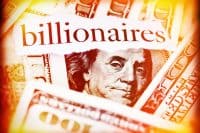
The three major U.S. equity indexes tumbled Friday following Fed Chair Powell’s eight-minute speech at the Fed’s Jackson Hole conference. The Dow Jones industrials fell by 4.03%, the S&P 500 dropped 3.73% and the Nasdaq slumped by 3.94%. All 11 sectors ended the day with losses, led by tech (4.3%) and consumer cyclicals (3.8%). The energy (1.2%) and utilities sectors (1.5%) posted the smallest losses. All three indexes were trading lower in Monday’s premarket, but the damage thus far was limited to around 1%.
The next big market-moving data point comes out Friday, when the nonfarm payrolls report for August is released. The current consensus forecast calls for 300,000 new jobs, down from July’s total of 528,000. The headline unemployment rate is expected to remain at 3.5%.
After markets closed on Friday, Jinko Solar reported that it missed earnings per share (EPS) estimates but more than doubled revenue, compared to the year-ago quarter. The stock traded down about 2% in Monday’s premarket.
Pinduoduo beat estimates on both the top and bottom lines. The company is preparing to expand to the United States, according to a Reuters report. On Friday, U.S. and Chinese authorities concluded a deal that allows U.S. regulators to inspect the audit reports of Chinese firms traded on U.S. stock exchanges. Pinduoduo shares traded up more than 11% Monday morning.
Before U.S. markets open on Tuesday, Baidu and Best Buy are on deck to report quarterly results.
Here is a preview of five companies set to report results after Tuesday’s close.
ChargePoint
Electric vehicle charging network provider ChargePoint Holdings Inc. (NYSE: CHPT) has seen its stock price drop by more than 28% over the past 12 months. The stock has declined by almost 50% since its March 2021 SPAC initial public offering. A convertible share offering in April did not help.
What did help was the recent federal commitment to spend more than $300 billion on fighting climate change. California’s announcement last week that it will stop selling fossil-fuel-only vehicles beginning in 2035 implies that many more charging stations will need to be built in the state and, if history is any guide, in other states as well.
Analysts are bullish on the stock, with 14 of 20 brokerages having a Buy or Strong Buy rating and the other six rating the stock at Hold. At a recent price of around $15.30 a share, the stock’s implied upside based on a median price target of $20.00 is about 30.7%. At the high price target of $46.00, the implied upside is 200%.
Revenue is forecast to reach $103.03 million for the second quarter of fiscal 2023, which would be up 26.2% sequentially and by 83.6% year over year. Analysts are expecting a loss per share of $0.20, compared with the prior quarter’s loss of $0.21 per share and worse than the year-ago loss of $0.13 per share. For the full fiscal year ending in January, ChargePoint is expected to post a loss per share of $0.72, worse than the prior year’s per-share loss of $0.61. Forecast full-year revenue of $471.12 million is up 94.4% from last year’s actual revenue.
The company is not expected to post a profit in 2024 or 2025. One analyst has forecast a profit of $0.11 per share in 2026. ChargePoint’s enterprise value to sales multiple for 2023 is 10.5, dipping to 6.6 in 2024 and 4.4 in 2025. The stock’s 52-week trading range is $8.50 to $28.72, and the company does not pay a dividend. The total shareholder return for the past year was negative 28.5%.
Chewy
Chewy Inc. (NYSE: CHWY) is a pure-play e-commerce provider of pet supplies and a subsidiary of privately held PetSmart. Over the past 12 months, the stock has dropped by more than 58%. Almost exactly a year ago, the stock began a decline that bottomed out when shares had dropped by more than 80%. A report last week that a Berkshire Hathaway-owned subsidiary of General Re, New England Asset Management, opened a new position in Chewy stock also provided a boost to the share price.
Analysts remain moderately bullish on the stock. Of 24 brokerages covering the company, 14 have a Buy or Strong Buy rating while nine more have put Hold ratings. At a share price of around $38.10, the upside potential to a median price target of $46.25 is 21.4%. At the high price target of $60.00, the upside potential is 57.5%.
Revenue in the second quarter of fiscal 2023 is forecast to come in at $2.45 billion, up about 1% sequentially and 13.4% higher year over year. Analysts are expecting an adjusted loss per share of $0.12, compared to the prior quarter’s EPS of $0.05 and the year-ago loss of $0.04 per share. For the full fiscal year, analysts forecast a per-share loss of $0.36, compared to last year’s loss per share of $0.17, on sales of $10.26 billion, up 15.4%.
Chewy is not expected to post a full-year profit until fiscal 2025. The current estimate from just three analysts calls for a profit of $0.49. The company does not pay a dividend, and the total shareholder return for the past year was negative 57.6%.
CrowdStrike
Cloud security platform maker CrowdStrike Holdings Inc. (NASDAQ: CRWD) has seen its share price decline by about 28% over the past 12 months. The stock posted its 52-week low in mid-May and its high in early November. Since that high, shares are down by around 34%. CrowdStrike remains an investor favorite, though. The shares are down just 5% for the year to date, while the Nasdaq 100 is down nearly 23%. And since that May low, CrowdStrike is up more than 40%, while the Nasdaq 100 is up 5.3%.
All 31 brokerages covering the firm have Buy or Strong Buy ratings. At a share price of around $194.60, the upside potential based on a median price target of $231.00 is 18.7%. At the high price target of $385.00, the upside potential is 97.8%.
Second-quarter fiscal 2023 revenue is forecast at $516.44 million, up 5.9% sequentially and by 52.9% year over year. Adjusted EPS are forecast at $0.27, down 11.9% sequentially but 145% higher year over year. For the full fiscal year ending in January, analysts expect CrowdStrike to report EPS of $1.21, up 80.5%, on sales of $2.2 billion, up 51.7%.
CrowdStrike stock trades at 160.9 times expected 2023 EPS, 108.2 times estimated 2024 earnings of $1.80 and 72.9 times estimated 2025 earnings of $2.67 per share. The stock’s 52-week range is $130.00 to $298.48. CrowdStrike does not pay a dividend. Total shareholder return for the past year is negative 30.2%.
HP
PC and printer maker HP Inc. (NYSE: HPQ) has added about 7.9% to its share price over the past 12 months. Since posting a 52-week high in early April, however, the shares have dropped by around 20% due largely to the tech stock implosion and the weakening demand for new PCs. Share buybacks totaling $2.5 billion over the previous two quarters have helped boost the share price, and the company’s CEO has promised to raise that to a total of $4 billion over the final two quarters of HP’s fiscal year.
Analysts are cautious on the stock. Of 18 brokerages covering the company, nine rate the stock at Hold while just three have a Buy rating. Another four consider the stock a Strong Sell. At a share price of around $31.40, the upside potential based on a median price target of $36.00 is 14.6%. At the high price target of $50.00, the upside potential is 59.2%.
Revenue in the third quarter of fiscal 2022 is forecast to come in at $15.63 billion, down 5.2% sequentially and 2.5% lower year over year. Adjusted EPS are forecast at $1.03, down 4.7% sequentially but up 3% year over year. For the full fiscal year ending in October, analysts currently forecast EPS of $4.33, up 12.8%, on sales of $65.31 billion, up 2.9%.
HP stock trades at 7.3 times expected 2022 EPS, 7.2 times estimated 2023 earnings of $4.33 and 7.1 times estimated 2024 earnings of $4.44 per share. The stock’s 52-week range is $26.11 to $41.47. HP pays an annual dividend of $1.00 (yield of 2.99%). Total shareholder return for the past year is 10.8%.
HPE
Enterprise-level hardware and software maker Hewlett Packard Enterprise Co. (NYSE: HPE) has lost about 9% from its share price over the past 12 months. From a high in early February (up about 18.6%) to a low in early July (down about 12.4%), the shares took some recent knocks following disappointing earnings from other enterprise hardware makers and a weaker demand outlook for the rest of the year. HPE has not raised its dividend since December 2019.
Analyst sentiment is solidly neutral on the stock, with 16 of 25 brokerages having a Hold and another seven with Buy or Strong Buy ratings. At a share price of around $13.80, the upside potential based on a median price target of $16.00 is 15.9%. At the high target of $20.00, the upside potential is about 45%.
For the company’s third quarter of fiscal 2022, analysts expect to see revenue of $6.97 billion, up 3.9% sequentially and by 1.0% year over year. Adjusted EPS are forecast at $0.48, up 9% sequentially and a penny better than the year-ago number. For the full fiscal year ending in October, analysts are looking for adjusted EPS of $2.02, up 3%, on sales of $28.21 billion, up 1.6%.
The stock trades at 6.3 times expected 2022 EPS, 6.1 times estimated 2023 earnings of $2.27 and 6.0 times estimated 2024 earnings of $2.30 per share. The stock’s 52-week range is $12.40 to $17.76, and the company pays an annual dividend of $0.48. Total shareholder return over the past year is negative 6.1%.
It’s Your Money, Your Future—Own It (sponsor)
Retirement can be daunting, but it doesn’t need to be.
Imagine having an expert in your corner to help you with your financial goals. Someone to help you determine if you’re ahead, behind, or right on track. With SmartAsset, that’s not just a dream—it’s reality. This free tool connects you with pre-screened financial advisors who work in your best interests. It’s quick, it’s easy, so take the leap today and start planning smarter!
Don’t waste another minute; get started right here and help your retirement dreams become a retirement reality.
Thank you for reading! Have some feedback for us?
Contact the 24/7 Wall St. editorial team.





